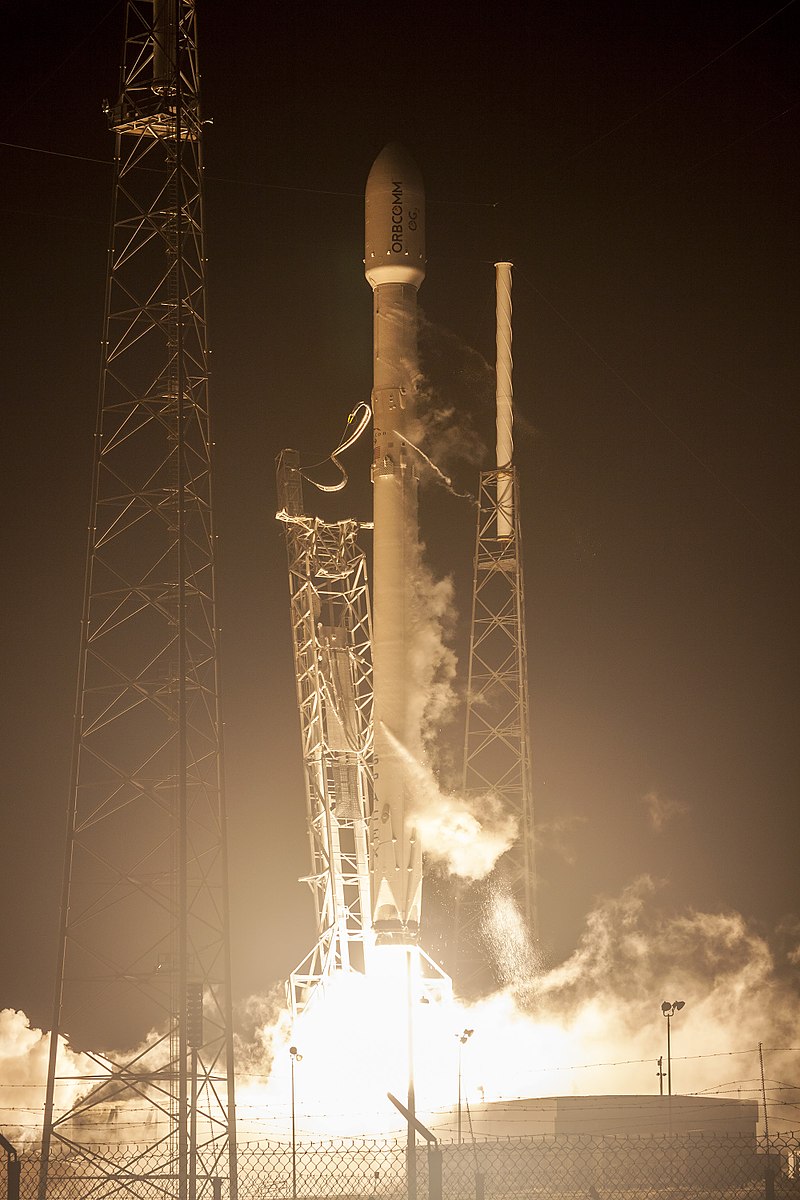The Falcon 9 may be one of the most recognisable and well-known rockets currently manufactured by SpaceX. With more and more media growing around SpaceX, I thought I should share with you some of the engineering principles and processes a rocket goes through during launch. So, let’s learn all about the Falcon 9 rocket.
What is its purpose?
The Falcon 9 acts as an orbital launch vehicle which means its goal is to carry a payload into earth orbit. A common payload is satellites.
How Does It Operate?
The Falcon 9 is a two-stage rocket first launched in 2010. A two-stage rocket means that two engines, which are self-sufficient, are used to achieve orbital velocity. Each engine is an independent system with exclusive supplies of propellants. The first stage’s use is for lift-off which, propels the rocket to approximately 6800 km/h and an altitude of 78 km. The duration of this stage is approximately 2 minutes and 40 seconds. During the first stage, the rocket will undergo max Q (which I am sure you have heard if you have watched rocket launches). Max Q is the point in flight in which the vehicle experiences maximum dynamics pressure. Max Q is a significant factor when designing a rocket because the aerodynamic structural load on a rocket is proportional to the maximum dynamic pressure. After completion of the first stage, MECO occurs – Main Engine Cut Off. During MECO, the first stage stops operating and disconnects from the rocket allowing the second stage to fire up, continuing to propel the rocket.

Merlin 1D – Stage 1

The Falcon 9 rocket has two stages powered by the SpaceX Merlin family of engines, using liquid oxygen and RP-1 (rocket grade kerosene) as the propellants. Both liquid oxygen and RP-1 are commonly used propellants for rockets. The Merlin engine works off the basis of a gas generator cycle, which I will cover in the future. The first stage utilises the Merlin 1D engine which has a thrust of 845 kN!
The Falcon 9 is partially reusable thanks to the fantastic technology upon the first stage engine. After the first stage detaches from the rocket, it makes its way back down towards the earth. The first stage is reusable as it can land itself! A big part of Musk’s vision for space travel is the ability to reuse parts of rockets, as this is a central concept to making space travel more cost-effective. The first stage engine can land itself thanks to a series of burns. As the engine returns to the atmosphere, it completes an entry burn which lasts approximately 36 seconds. The goal of this process is to slow the entry velocity into the atmosphere. As it approaches earth, the first stage engine completes another burn – called the landing burn. The landing burn slows the first stage’s velocity by an incredible amount allowing, it to land on its tripod-like legs! See the amazing image below showing the process.
During the landing process grid fins are deployed, which act as a guide for the first stage to ensure it is on the right path and make any adjustments if necessary. The feat of landing the first stage was first achieved during flight 20, occurring on the 20th December 2015.

Merlin 1D Vacuum – Stage 2
A vacuum version of the Merlin 1D was developed to utilise on the Falcon 9. The Merlin 1D has a thrust of 981 kN, with a specific impulse of 348 seconds. If you know about rockets, you will know the specific impulse is an essential design factor as it represents the efficiency of a rocket engine. A thrust of this calibre is the result of an expansion ratio of 165:1, which is possible due to operating in a vacuum. The burn time for stage 2 is a lot longer than stage 1, 397 seconds.
Key Stats
| Height (m) | 71 |
| Diameter (m) | 3.66 |
| Mass (kg) | 549,000 |
| Stages | 2 |
| Payload Capacity (LEO) (kg) | 22,800 |
| Payload Capacity (GTO) (kg) | 8,300 |
| Payload to Mars (kg) | 4,020 |
| Stage 1 Engine | 9 x Merlin 1D |
| Stage 2 Engine | 1 Merlin 1D Vauum |
Summary
The Falcon 9 rocket is a wonderful piece of engineering and has exceptional performance characteristics. We have covered some of the operating processes regarding the Falcon 9 and briefly discussed some operations of rockets in general. I hope you have enjoyed this different style of post. If you like this kind of content, let me know and, I can create more!
Related Posts: Pressures And Temperatures Of A DeLaval Nozzle
